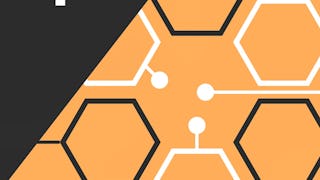In this course, you’ll learn how to create Tableau dashboards that connect data to decision-making. Starting with stakeholder planning and data requirements, you’ll define goals, success metrics, and key questions. Then, you’ll clean and prepare a real-world tech salary dataset using Tableau’s filtering, aliasing, and data type tools. You’ll turn these insights into impactful dashboards using calculated fields, grouping, and interactivity. Finally, you’ll explore how to interpret and present dashboards effectively through Socratic dialogue—critiquing design choices, analyzing KPIs, and refining your data story. By the end, you’ll be able to deliver dashboards that are insightful, persuasive, and tailored to audience needs.

Gain next-level skills with Coursera Plus for $199 (regularly $399). Save now.

Creating Dashboards and Storytelling with Tableau
This course is part of Data Visualization with Tableau Specialization


Instructors: Govind Acharya
73,112 already enrolled
Included with
(1,052 reviews)
Recommended experience
What you'll learn
Combine the data and follow the best practices to present your story
Create calculated fields for KPIs to build a figure that will be used to measure progress in the data
Assemble a dashboard
Analyze concepts and techniques for compelling storytelling with data
Skills you'll gain
Details to know

Add to your LinkedIn profile
See how employees at top companies are mastering in-demand skills

Build your subject-matter expertise
- Learn new concepts from industry experts
- Gain a foundational understanding of a subject or tool
- Develop job-relevant skills with hands-on projects
- Earn a shareable career certificate

There are 4 modules in this course
Welcome to the first module of this course! Effective dashboards begin with clean, reliable data. In this module, you’ll work with a real-world tech salary dataset to clean and prepare data for analysis using Tableau. You’ll filter out problematic records, apply aliases to standardize values, and adjust data types to support accurate visualizations.
What's included
7 videos3 readings1 assignment
Before designing any dashboard, you need to understand your audience and their goals. In this module, you’ll take on the role of a Business Intelligence Analyst working with stakeholders like HR, Finance, and Engineering. You’ll complete a RACI chart and a data requirements template to define objectives, metrics, assumptions, and scope. This foundational work ensures your dashboard delivers the right insights to the right people.
What's included
6 videos2 readings1 assignment
Turn your stakeholder requirements into a focused dashboard. In this module, you’ll use Tableau to group data, create calculated fields, and design charts that compare compensation across job roles and companies. You’ll iterate on your design to sharpen the message and surface actionable insights.
What's included
6 videos1 reading1 assignment
In this final module, you’ll focus on evaluating and improving dashboards using best practices in visual design. You’ll explore how layout, chart selection, and data clarity impact the viewer’s understanding. Through hands-on analysis, you’ll practice identifying effective design elements, spotting potential issues, and refining dashboards to better align with stakeholder goals. You’ll also consider how to present findings in ways that are both accurate and persuasive.
What's included
6 videos1 reading1 assignment
Earn a career certificate
Add this credential to your LinkedIn profile, resume, or CV. Share it on social media and in your performance review.
Instructors

Offered by
Explore more from Data Analysis
 Status: Free Trial
Status: Free TrialCorporate Finance Institute
 Status: Preview
Status: Preview
Why people choose Coursera for their career




Learner reviews
1,052 reviews
- 5 stars
73.19%
- 4 stars
20.24%
- 3 stars
4.56%
- 2 stars
1.04%
- 1 star
0.95%
Showing 3 of 1052
Reviewed on Apr 22, 2018
Its a good Course to get understanding regarding Tableau Story telling ,This course covers start to end aspects of story telling with Tableau.Its a very good course to move forward in Tableau
Reviewed on Apr 18, 2020
Great course. Chapeau to teachers and many great fellow students. It was fun to see the all the past courses come together in this 4th round! Thanks!
Reviewed on Jun 1, 2021
Course was good overall but the sections on Tableau tool were sometimes hard to follow. More step-by-step detail needed. Sometimes the transcripts didn't match what the instructor was staying.
Frequently asked questions
To access the course materials, assignments and to earn a Certificate, you will need to purchase the Certificate experience when you enroll in a course. You can try a Free Trial instead, or apply for Financial Aid. The course may offer 'Full Course, No Certificate' instead. This option lets you see all course materials, submit required assessments, and get a final grade. This also means that you will not be able to purchase a Certificate experience.
When you enroll in the course, you get access to all of the courses in the Specialization, and you earn a certificate when you complete the work. Your electronic Certificate will be added to your Accomplishments page - from there, you can print your Certificate or add it to your LinkedIn profile.
Yes. In select learning programs, you can apply for financial aid or a scholarship if you can’t afford the enrollment fee. If fin aid or scholarship is available for your learning program selection, you’ll find a link to apply on the description page.
More questions
Financial aid available,
¹ Some assignments in this course are AI-graded. For these assignments, your data will be used in accordance with Coursera's Privacy Notice.







